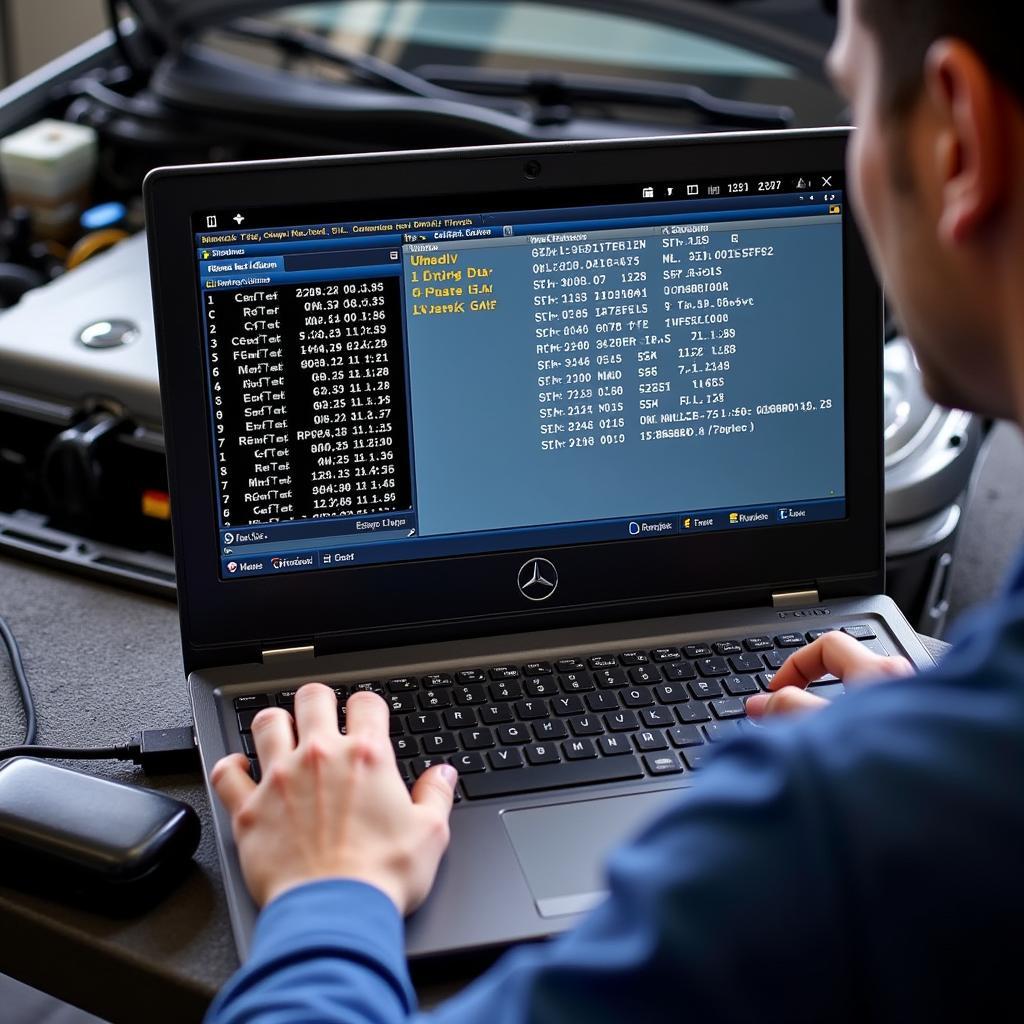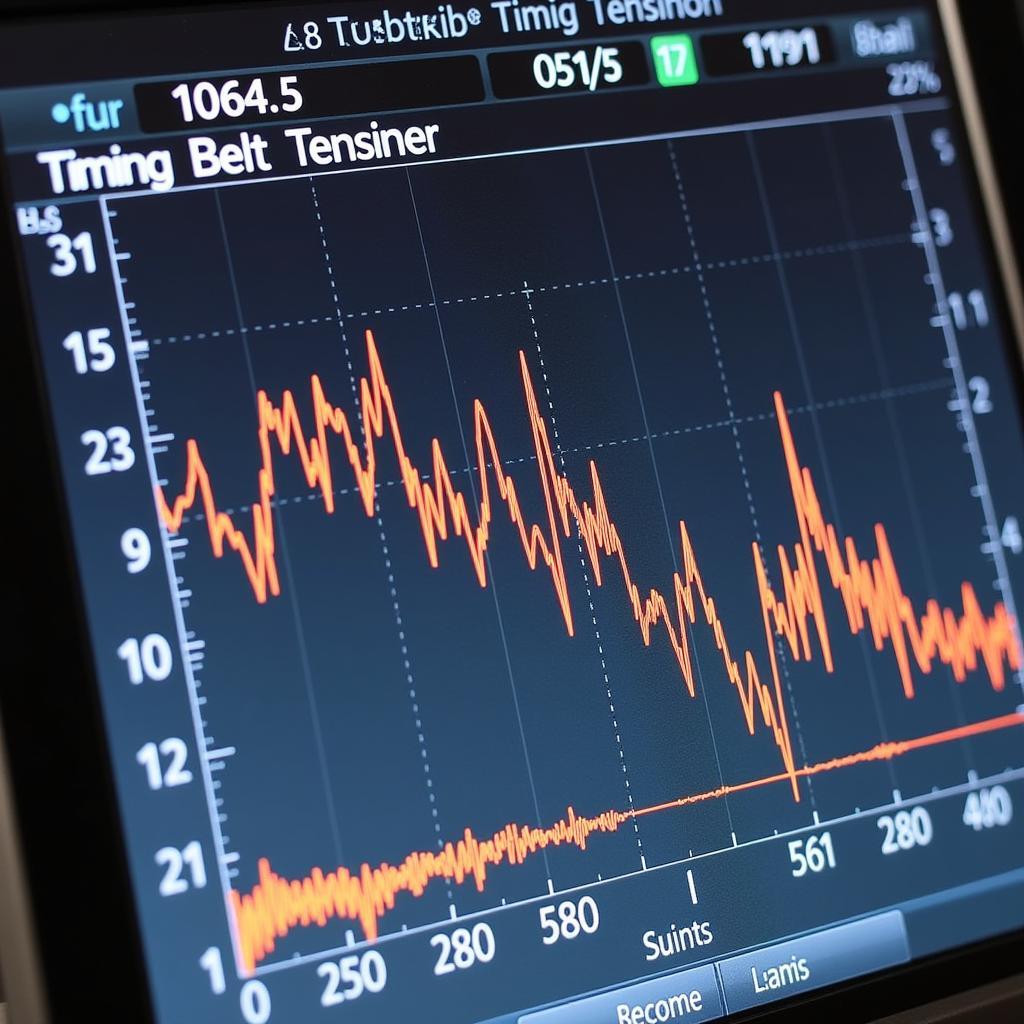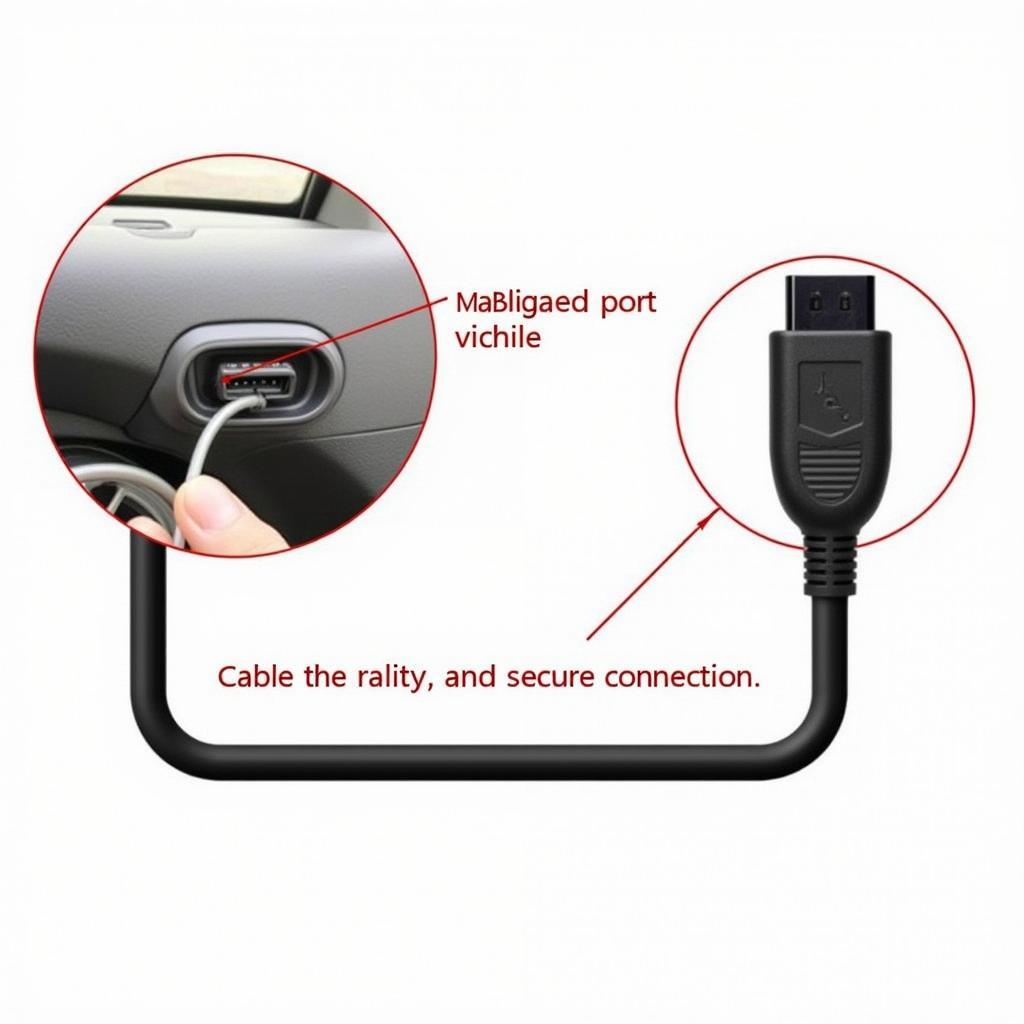Understanding your car’s timing belt is crucial for maintaining its performance and preventing costly repairs. A VCDS (VAG-COM Diagnostic System) offers an advanced way to monitor and diagnose timing-related issues, providing insights beyond basic inspections. This comprehensive guide explores the importance of a vcds timing belt check, how to perform one, and common issues to watch out for.
What is a VCDS Timing Belt Check and Why is it Important?
Unlike a visual inspection, a vcds timing belt check delves into the electronic workings of your engine’s timing system. This diagnostic approach utilizes the VCDS software to access control module data, providing a more precise and detailed analysis. Early detection of timing issues with VCDS can save you from potential catastrophic engine damage. A worn or misaligned timing belt can lead to valve damage, piston damage, and even a complete engine failure. Regular checks, especially using advanced tools like VCDS, are essential preventative maintenance.
How to Perform a VCDS Timing Belt Check
Performing a vcds timing belt check requires a VCDS interface cable and the compatible software installed on a laptop. The exact procedure can vary depending on the vehicle’s make and model. However, the general steps involve connecting the interface to the car’s OBD-II port, launching the VCDS software, and selecting the appropriate engine control module. Within the engine module, specific measuring blocks relate to timing values, such as camshaft and crankshaft position. Comparing these values against manufacturer specifications allows you to identify any discrepancies that might indicate a problem.
 VCDS Software Interface for Timing Belt Check
VCDS Software Interface for Timing Belt Check
It’s important to consult your vehicle’s specific repair manual or seek guidance from experienced technicians for accurate interpretation of the data. While some basic checks can be performed with free versions of VCDS, full functionality often requires a licensed version. Remember, a vcds timing belt check is a diagnostic tool, and a professional mechanic should address any detected issues.
Common Timing Belt Issues Detectable with VCDS
VCDS can help identify various timing belt issues, including:
- Timing Belt Stretch: VCDS can detect slight variations in timing due to belt stretch, allowing for proactive replacement before more severe issues arise.
- Camshaft/Crankshaft Synchronization Errors: Deviations from the specified synchronization between the camshaft and crankshaft can be precisely measured using VCDS, indicating potential belt slippage or misalignment. For further information on camshaft timing with VCDS, check out vcds cam timing.
- Tensioner Problems: Issues with the timing belt tensioner might not be visually apparent, but VCDS can detect irregularities in timing fluctuations, suggesting a failing tensioner.
 VCDS Timing Belt Tensioner Analysis
VCDS Timing Belt Tensioner Analysis
Interpreting VCDS Data for Timing Belt Analysis
Correctly interpreting VCDS data is crucial for accurate diagnosis. Understanding the specific measuring blocks and their corresponding values for your vehicle is essential. For instance, certain blocks might display the angle between the camshaft and crankshaft, while others might show timing advance or retard. Comparing these readings to manufacturer specifications helps determine if the timing is within acceptable tolerances. You can find more information on using VCDS for specific models, such as the Mk5 Jetta, by visiting how to measure timing mk5 jetta vcds.
When to Consult a Professional
While VCDS is a powerful tool, it’s essential to recognize its limitations. If you’re unsure about interpreting the data or performing the check yourself, consulting a qualified mechanic is always recommended. They have the experience and expertise to accurately diagnose and address any timing-related issues. Attempting repairs beyond your skill level can lead to further damage and higher repair costs. You might also find resources related to checking timing with free versions of VCDS at how to check timing with vcds free verizon.
Conclusion
A vcds timing belt check provides a valuable diagnostic tool for identifying potential timing-related problems before they escalate into major engine damage. While VCDS offers advanced insights, understanding its functionalities and correctly interpreting the data is crucial. When in doubt, always consult a qualified professional. Regular monitoring and preventative maintenance are essential for preserving your vehicle’s engine health and longevity. More information regarding specific engine types and VCDS usage can be found on resources such as 1.8t timing vcds and 1.9 tdi camshaft timing vcds.
For any assistance, please contact us via WhatsApp: +1 (641) 206-8880, Email: CARDIAGTECH[email protected] or visit us at 276 Reock St, City of Orange, NJ 07050, United States. We have a 24/7 customer support team.

